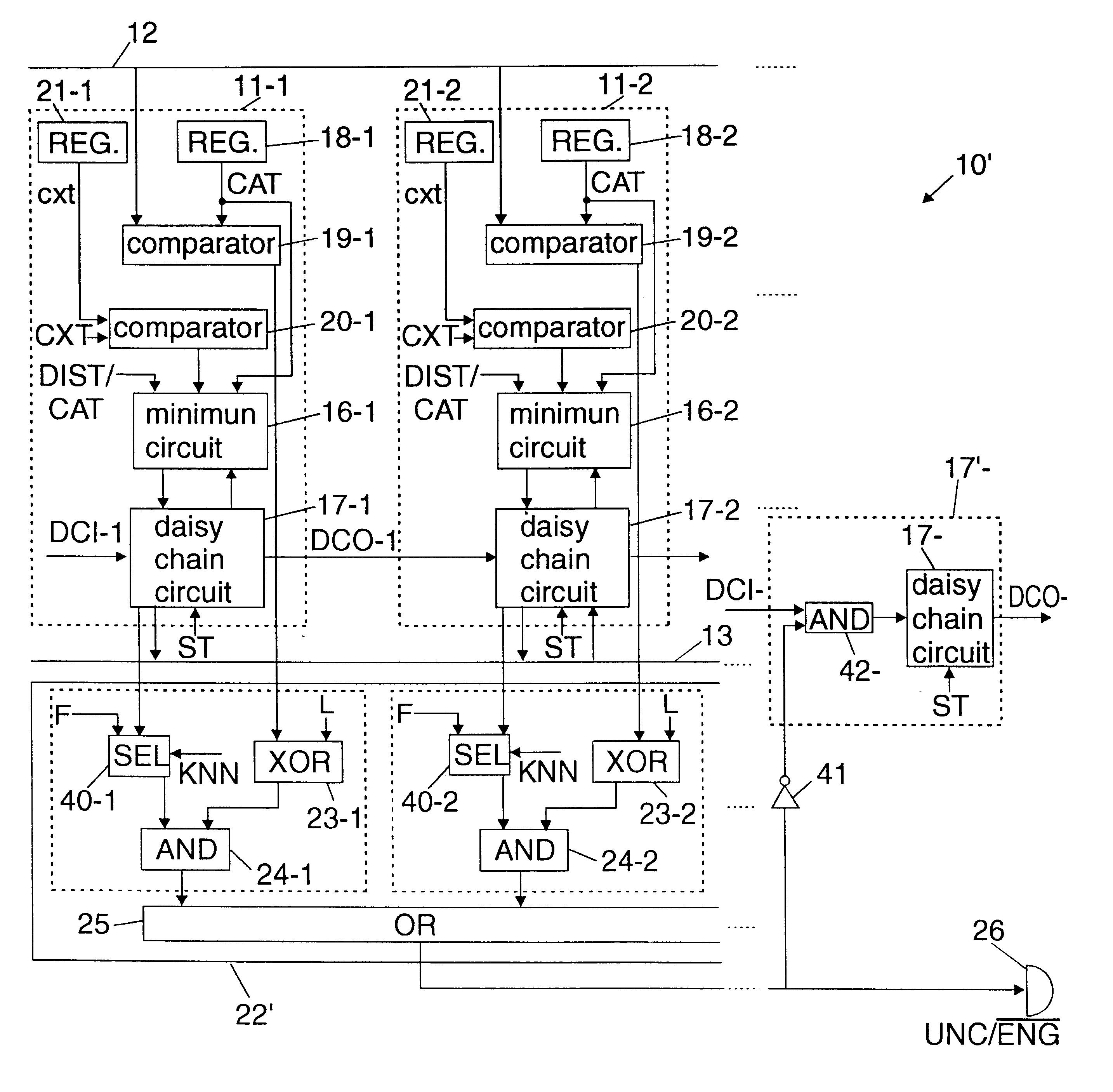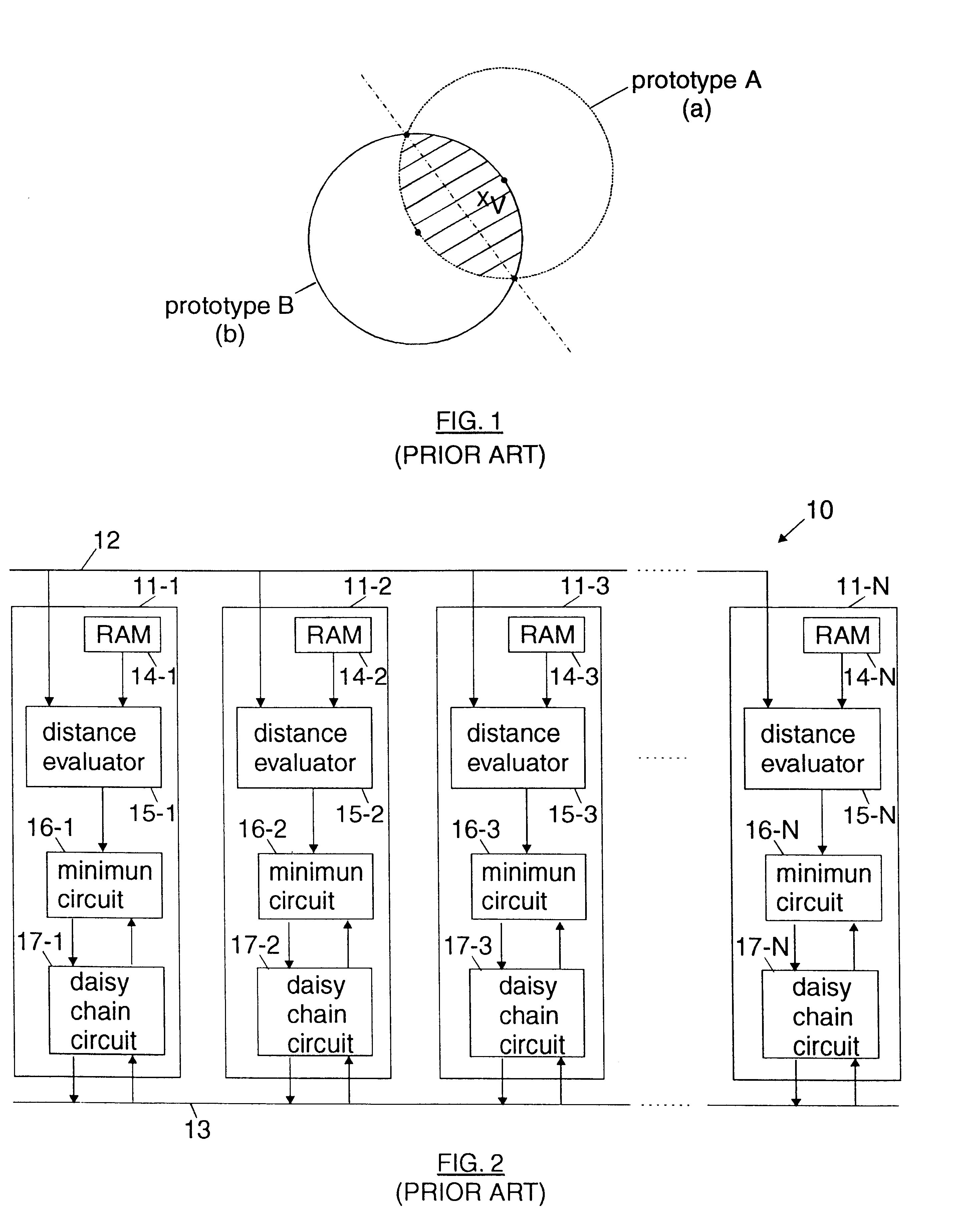Implementing automatic learning according to the K nearest neighbor mode in artificial neural networks
- Summary
- Abstract
- Description
- Claims
- Application Information
AI Technical Summary
Benefits of technology
Problems solved by technology
Method used
Image
Examples
Embodiment Construction
FIG. 4 is a flowchart referenced 27 showing the essential steps of the method of implementing the automatic KNN learning in an artificial neural network, such as the ANN incorporated in ZISC chips, according to the present invention. For illustration purposes, only the essential steps of the recognition process are shown in FIG. 4. However, since they are considered as state-of- the-art per se, they will be only briefly discussed.
Assuming that the existence of at least one free neuron has been checked. Turning to FIG. 4, the learning phase in the KNN mode is initiated by entering the input vector to be learned in the ANN. In essence, it consists in performing a `Write components operation`, i.e., entering all the components of the input vector in the Read / Write memory of the first free neuron (step 28). It may be noticed that this step is common to both the learning and to the recognition modes. Therefore, a test must be conducted to determine whether the following processing applie...
PUM
 Login to View More
Login to View More Abstract
Description
Claims
Application Information
 Login to View More
Login to View More - R&D
- Intellectual Property
- Life Sciences
- Materials
- Tech Scout
- Unparalleled Data Quality
- Higher Quality Content
- 60% Fewer Hallucinations
Browse by: Latest US Patents, China's latest patents, Technical Efficacy Thesaurus, Application Domain, Technology Topic, Popular Technical Reports.
© 2025 PatSnap. All rights reserved.Legal|Privacy policy|Modern Slavery Act Transparency Statement|Sitemap|About US| Contact US: help@patsnap.com



